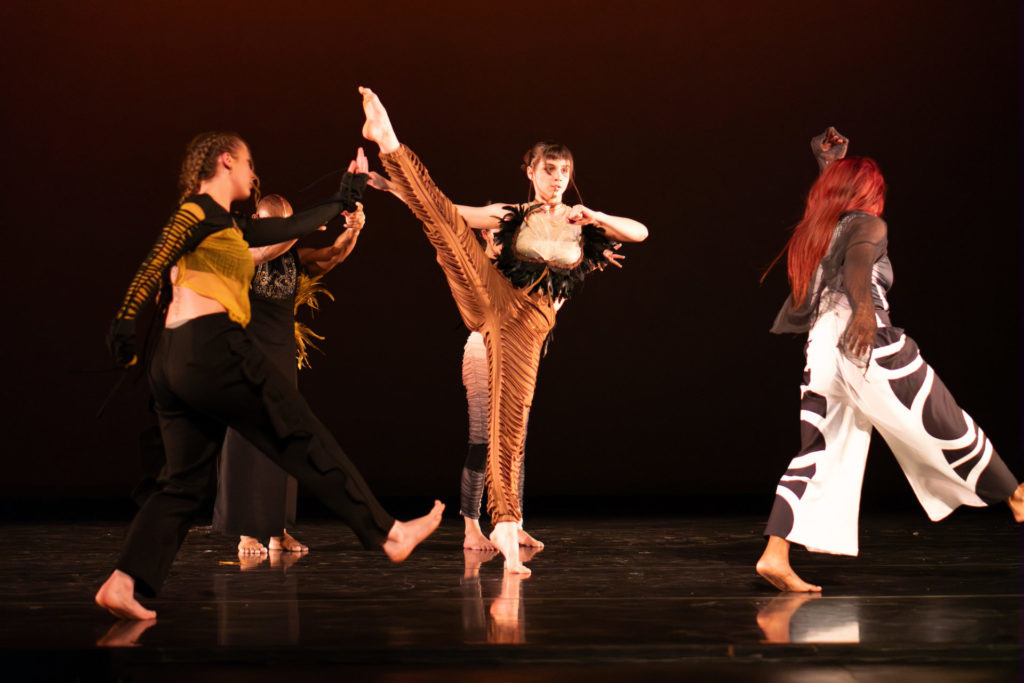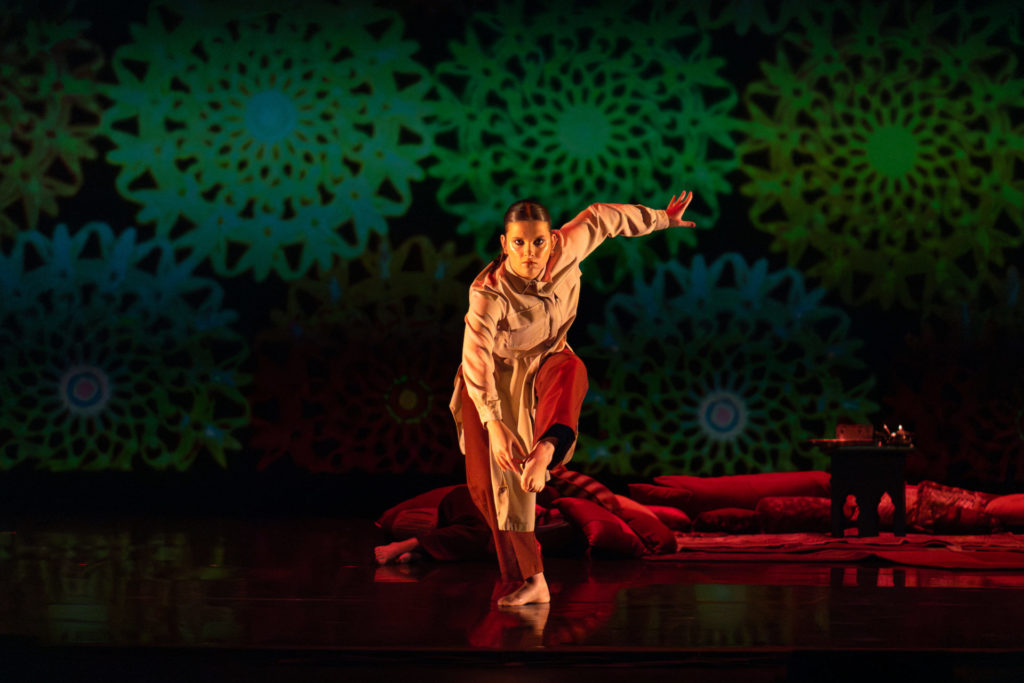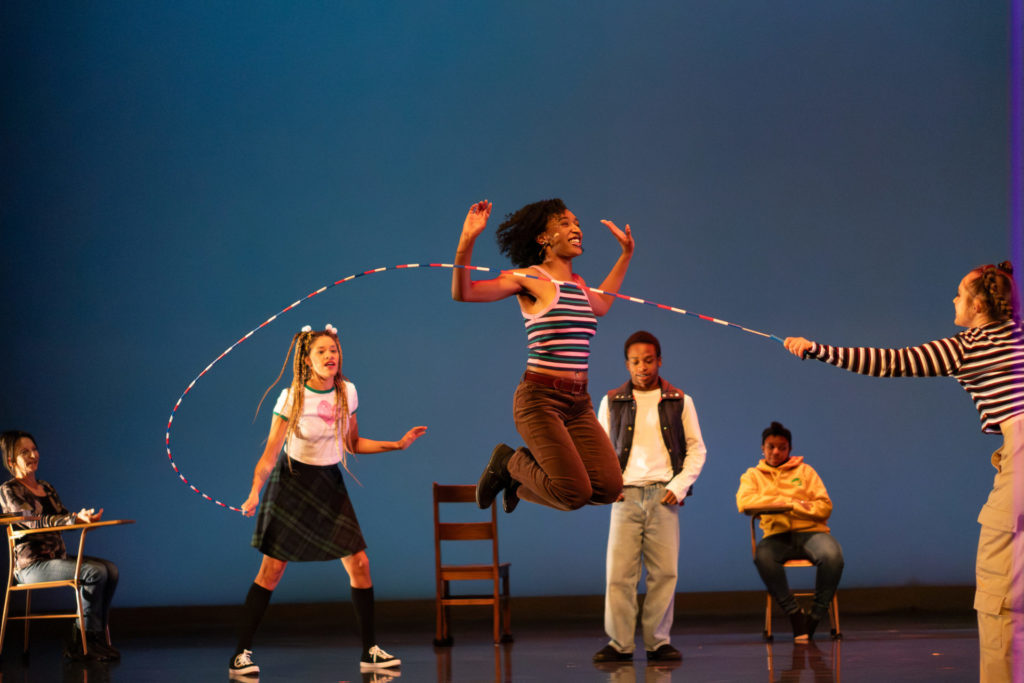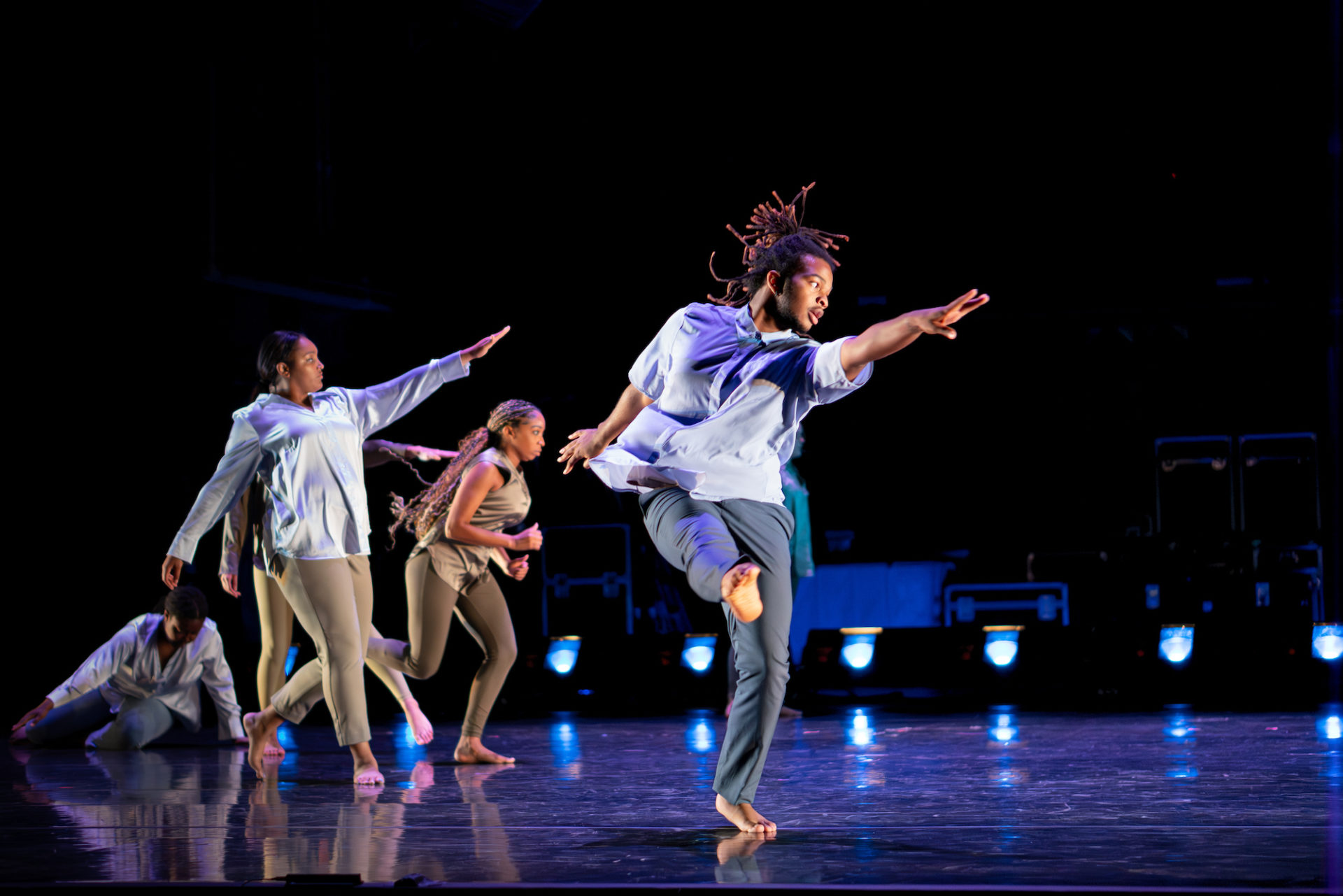Ahead of October Dance, I spoke with concert director Sara Hook about the planning and preparation for the annual dance showcase put on by the University of Illinois’ Department of Dance. This year’s performance was somewhat unique in that it featured five works, all by female choreographers. Three of those were from faculty members: Cynthia Oliver, Alexandra Barbier, and Anna Sapozhnikov; one from a third-year student: Nawal Assougdam; and one work by the legendary Martha Graham. Although the pieces varied in style and tone, all together, they made for an eclectic and enthralling dance showcase.
The show opened with Summon. Sow. Reap choreographed by Cynthia Oliver, and featured five dancers. The program described the number: “After a long and fallow period, spirits are summoned, seeds are sown, and just rewards are reaped.” A single dancer entered the stage and did a short solo number before being joined on stage by more dancers, as if she herself had summoned them with her movements. The dancers mostly moved independently, as though they were awakening from a long sleep. This opening piece was full of a number of unexpected turns, including tone shifts that saw the dancers at one point dancing the electric slide and loudly talking and cheering, before once again shifting back into a more constructed role, this time dancing synchronized, and eventually moving into a circle with more chaotic movements. The number was electric, surprising, and a great opening to the show.

Atay?, choreographed by Nawal Assougdam, featured another kind of awakening. Set up as a traditional tea ceremony complete with countless pillows on the ground, the dancers in this number went through cycles of awakening, codependency, appearing almost sickly and fading, and ultimately drawing strength from one another. There was a clear story being told and the set, including the colorful projected backdrop, helped to effectively convey the narrative.

The first half of the performance closed with Steps in the Street, an excerpt from Chronicle, which was originally choreographed by Martha Graham in 1936. In my interview with Sara Hook ahead of this year’s performance, she said of that the Graham number “is widely interpreted as a protest against racism, and exclusionary politics. Unfortunately, racism and antisemitism are alive globally. We chose this work from the Graham repertory, as the Graham company celebrates its centennial, to draw connections across the centuries.” The piece was performed by a gender-inclusive cast, all wearing the original black dresses designed by Graham.
This number was, simply put, exceptional. The dancers moved with soldier-like precision, and I personally could not take my eyes away (this is not an exaggeration; I wrote one sentence in my notes for this review because I was so captured by the performance that I forgot to write anything else down). If you only have time to watch one performance from this year’s October Dance, it should be this one. The choreography manages to both be very much of its time and also timeless and relevant today. Truly an exceptional piece that’s very easy to understand why it is still being staged nearly 100 years after its debut.
After the intermission, the audience was again taken back in time; this time, to Alexandra Barbier’s childhood. yESteRDaZe* (the title is deliberately stylized to resemble the dELiA*s catalog) is part of assistant concert director Barbier’s “14-piece autoethnographic body of work-in-progress titled Stations of Black Loss.” Barbier opened by welcoming those of back who had seen another part of her work at Dance at Illinois downtown in the Spring. You can read my review of that performance here. While Barbier’s earlier piece was vulnerable and revolved around stories from her life in which she encountered her own internalized anti-Blackness, yESteRDaZe* was pure joyful nostalgia. The stage was filled with school desks; the performers jumped rope. Barbier walked the audience through stages of childhood and adolescence moving effortlessly across the stage while telling stories of recreating music videos for the school talent show and the difficulty of not being able to google the lyrics of her favorite songs. Barbier is charismatic, has a knack for storytelling, and knows how to engage her audience. It was a fun number, and the audience absolutely loved it and enjoyed the walk down memory lane. I also applaud Barbier for highlighting a genre of dance (90s and 2000s music videos) that often doesn’t get appreciated as much as it arguably should.

The evening closed with Anna Sapozhnikov’s Bells for Us, a number featuring 13 first-year dancers from the department. The dancers were clad in satin button downs and fitted jeans or leggings in neutral tones. The stage was opened up to reveal the back lighting. I enjoy larger numbers such as this to close a show, and this one was not a disappointment. The dancers moved fluidly on and off the stage and played well off of one another.
I think this was overall a strong debut for the year from the Department. I applaud them for including such diverse pieces and voices, but still managing to pull off a cohesive and well-thought-out show.
If you didn’t get a chance to make it in person, or want to relive any of the numbers, the livestream of the performance will be available for two weeks (password: DanceAtIllinoisOctober2023).








